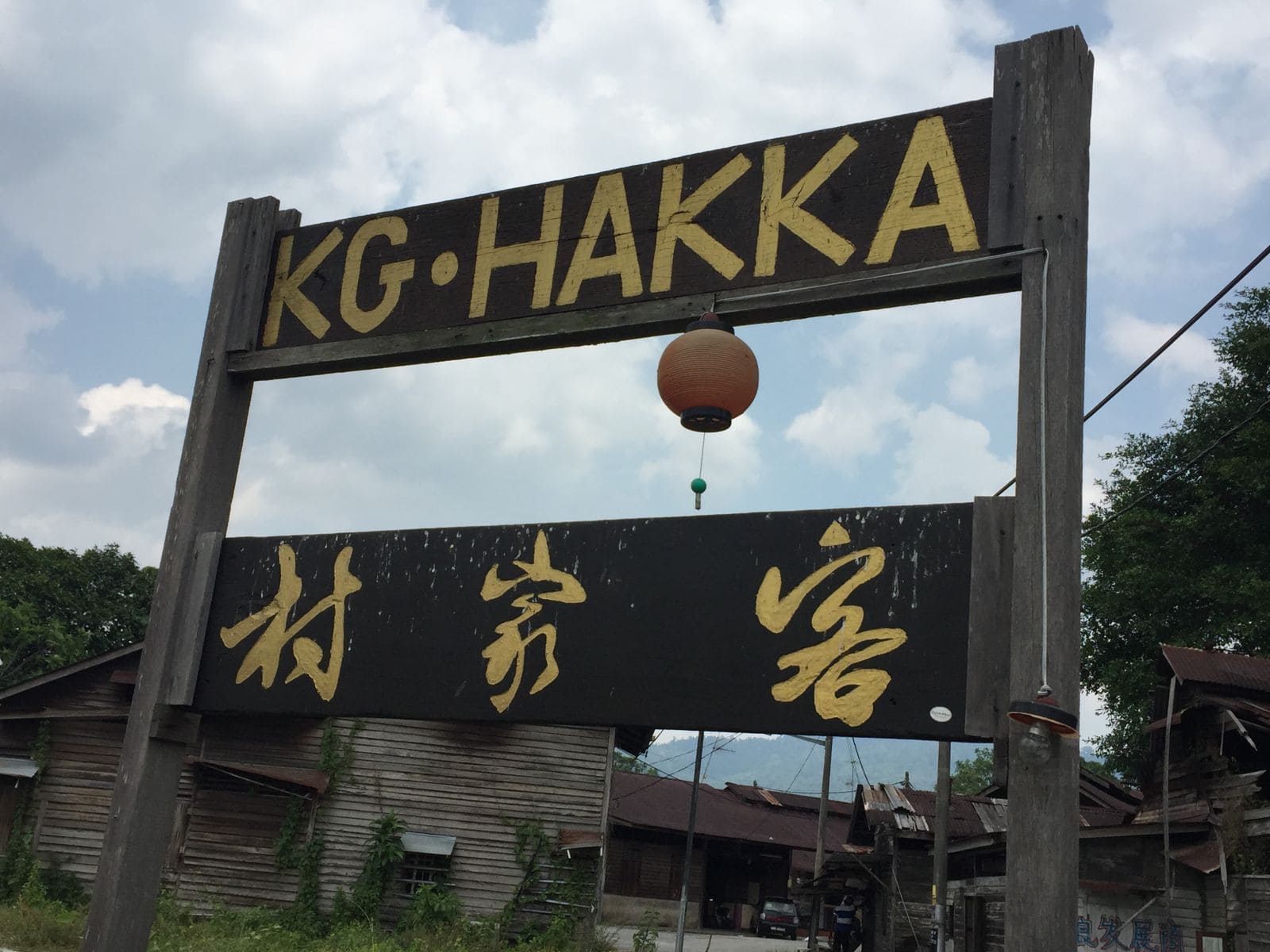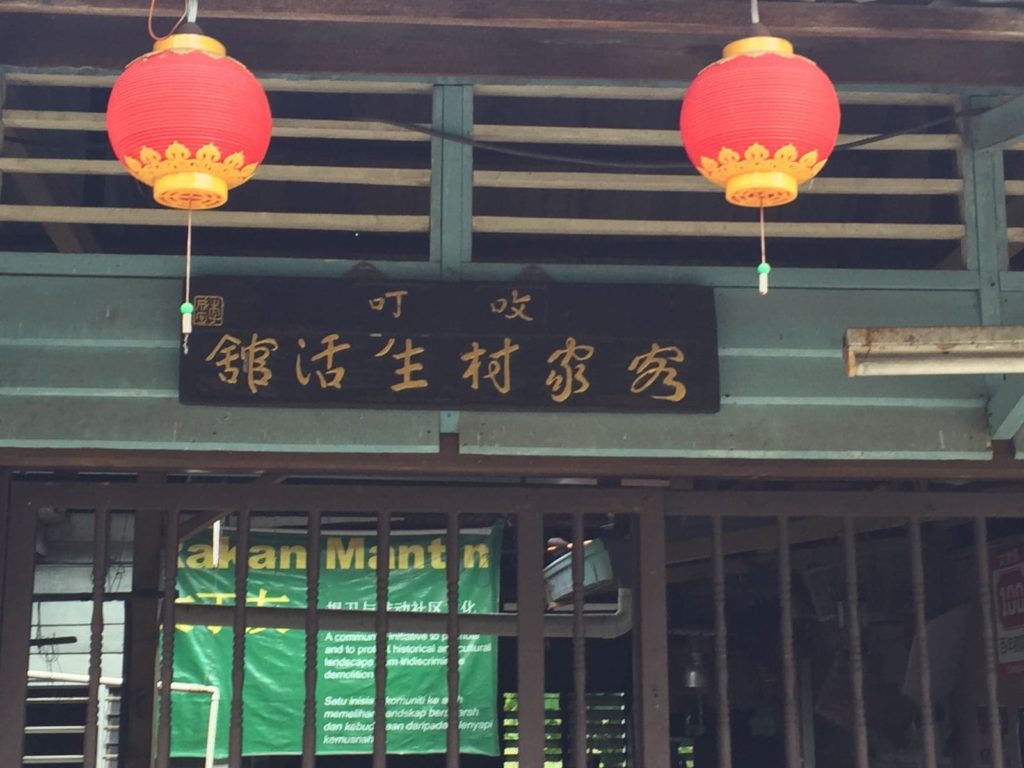On September 19, Rakan Mantin welcomed our Explorers group in Kg Hakka, Mantin, Negeri Sembilan.
A wooden sign in the middle of the road in the town of Mantin, gave us the indication that we had arrived at Kg Hakka. The graffiti words behind the wooden sign urging to: “Don’t break down the Kg”, drove our attention and reaffirmed why we were there.

The history of Kg Hakka or Kg Attap, as the village was also once known, dates back to the time when tin mining developed into a main economic activity in the Kinta, Klang and Mantin valleys. The growing industrial demand for tin, along with the discovery of abundant tin deposits in these valleys, led to a large scale immigration of Chinese workers during the 19th century until World War II. Their arrival contributed to the development of Malaysia as a multiracial country and to the growth of the tin mining industry by providing the needed labour. The tin ore available in this landscape gave the place the name of Mantin, meaning 'many tin'. In the past, most of the 32 acres surrounding the village were crowded with dredges used in mining activities.
Today, this is long forgotten. The villagers, who settled in Kg Hakka over a century ago, are now confronted with the pressure of relocation, because their rights of residence and land are not recognized by the authorities. According to Chi (2014) the land on which the 32-acre village sits now belongs to Mega 9 Development Sdn Bhd which bought it from the Nilai Municipal Council. Of the 200 families who used to live in the small village, only 40 families remain in Kg Hakka, the majority gave up their homes and accepted relocation. Those families who decided to stay in the village are well aware of the inevitable destruction of their homes, but they are tenacious in defending their Hakka heritage and they hold on to their homes.

Once the Explorers’ gathered at the entrance of the village, our host, Victor Chin, welcomed us and we followed him to the village´s Interpretative Centre. Victor Chin is behind the formation of Rakan Mantin. The purpose of this movement is urban conservation and especially to give support to the community of Mantin by documenting their heritage due to its significant historical landscape. It is worth mentioning that Victor Chin is also the founding member of the Rakan KL movement; which aims to prevent the demolition of historical areas of Chinatown due to the MRT construction.
Rakan Mantin was put together by Victor, with the collaboration of Chan Seong Foon, in September 2012. They wanted to support the residents’ rights to continue living in their village by raising awareness of the history of the Kg Hakka within their own community as well as to outsiders (Community arts, 2014).
While at the Interpretative Centre, we had the opportunity to watch the short movie “Memory as Resistance: Grandma Kong defending her village”. This documentary was made by Rakan Mantin. The documentary summarized the reflections of Grandma Kong about her life in Kg Attap. She was born in 1927 in one of the traditional Hakka houses, which is still standing across the road from the Interpretative Centre. Grandma Kong raised nine children and she not only took care of her family and house, but helped her husband at the estate rubber plantation. Now, at the age of 89, she is still cooking and cleaning for the family, and earns a sparse income by making rice wine. She is a very strong, determined woman and we felt honoured to have met her that day.
The Interpretative Centre is the home of Chong Tze Yaw and has belonged to his family for six generations. The old house has been renovated and is used as a small exhibition hall, where old pictures and documentation of residents’ stories are on display.
The agenda for the day included a walking tour through the village and we were pleased to meet more villagers who shared with us their life stories, including the delightful Grandmas Kok and Lee who run Mah-jong game tables in their homes. A grocery store, an impressive Church under the name of St Aloysius built in 1900 as well as a Chinese temple also over 100 years old were included in our tour, kindly guided by Seong Foong.
At the end of the tour we enjoyed the lunch prepared by the Kg Hakka ladies.
The Kg Hakka villagers, with the support of Victor Chin, Seong Foong and the other members of Rakan Mantin, welcome visitors and encourage them to participate in social events organized in the village. The goal is to exchange the villagers’ stories with the visitors, emphasizing a two-way experience, much like visiting a new friend´s home and avoiding turning it into a showcase.
The tour to Kg Hakka certainly gave us this feeling of visiting a new friend´s house because of the kindness and hospitality of the people despite the language barriers.
Text and photos by Natalia Gutierrez
References
Chi, M. (2014). After surviving 120 years, Kg Hakka may fall to modern times. [Online] Themalaymailonline.com. Available at: http://www.themalaymailonline.com/malaysia/article/after-surviving-120-years-Kg-hakka-may-fall-to-modern-times [Accessed 26 Sep. 2016].
Community arts, (2014). Rakan Mantin. [Online] community arts. Available at: http://www.communityarts.my/#!case-studies/c1z4n [Accessed 2 Jul. 2016].
Gregory-Smith, J. (2016) Personal communication.
TED Case Studies: Historical Tin Mining in Malaysia. [Online] Available at: http://www1.american.edu/ted/tin.htm [Accessed 26 Sep. 2016].
